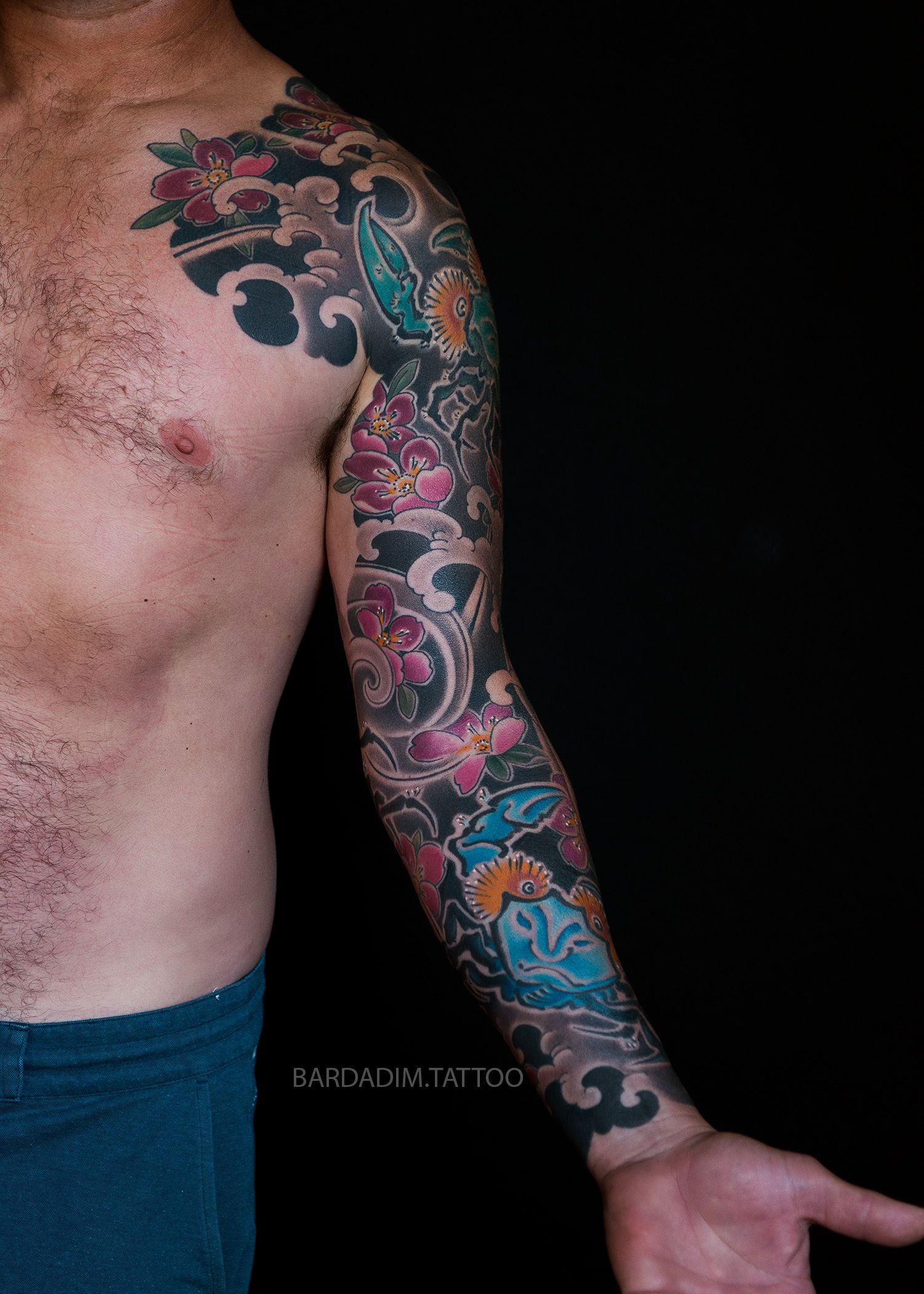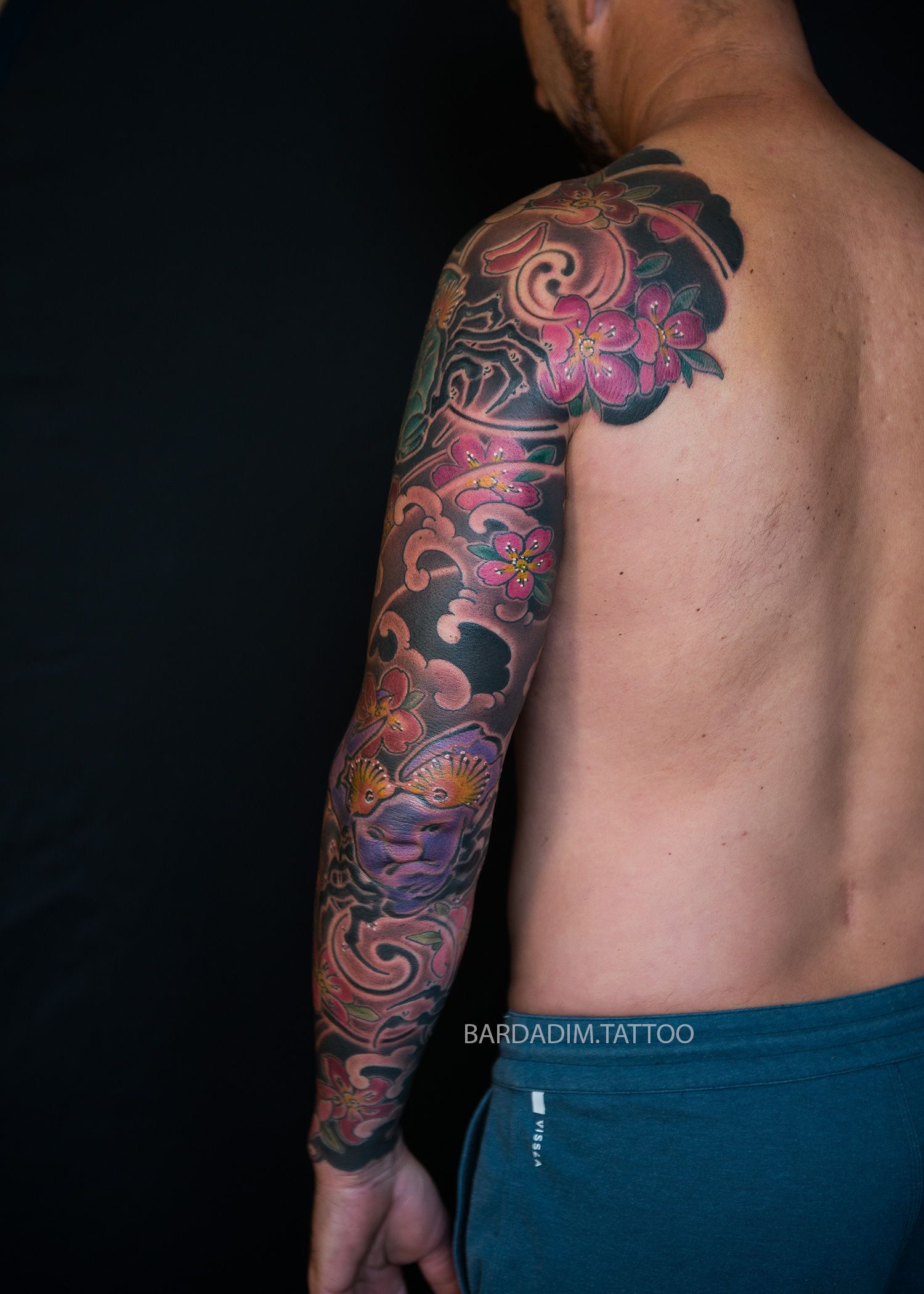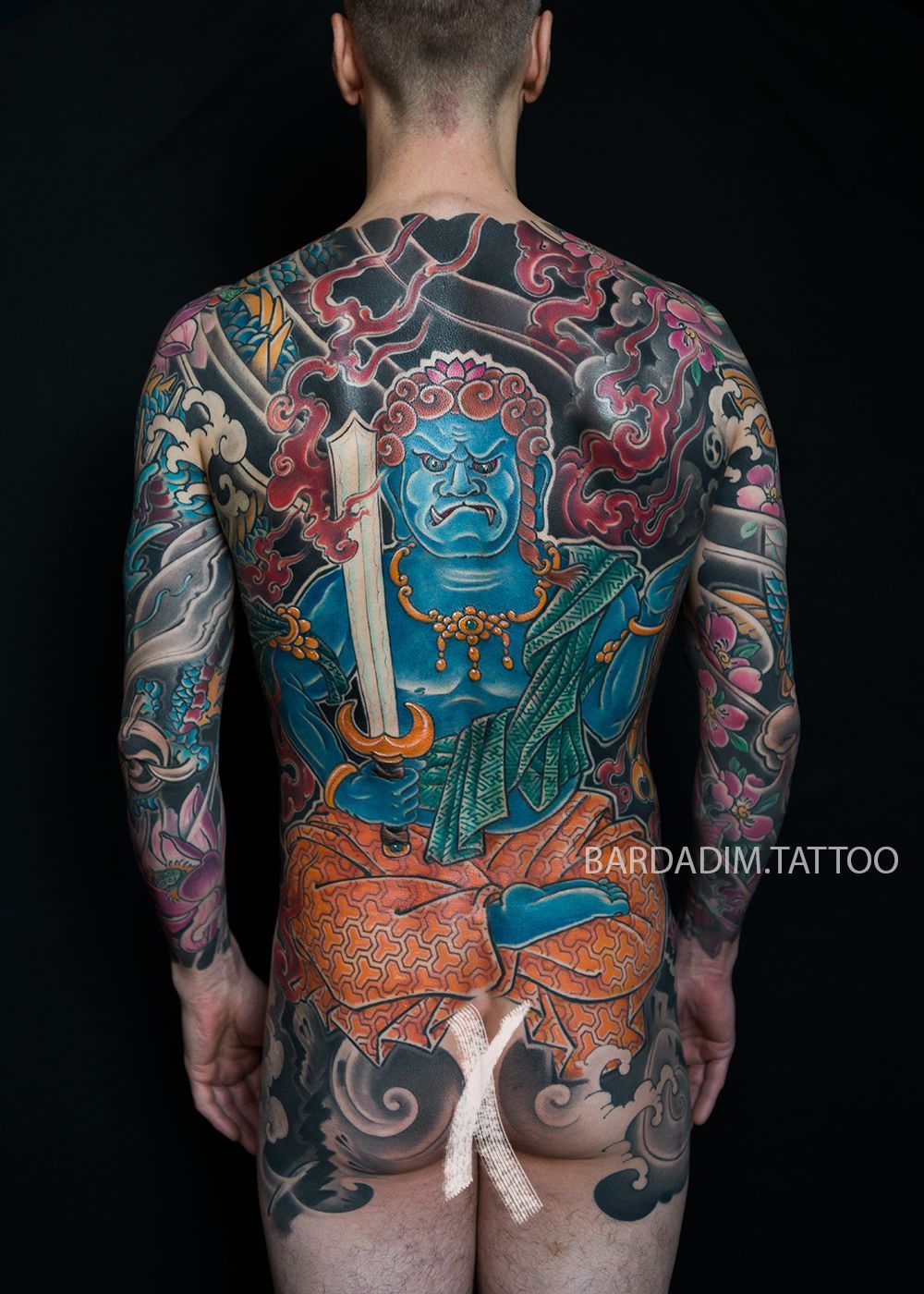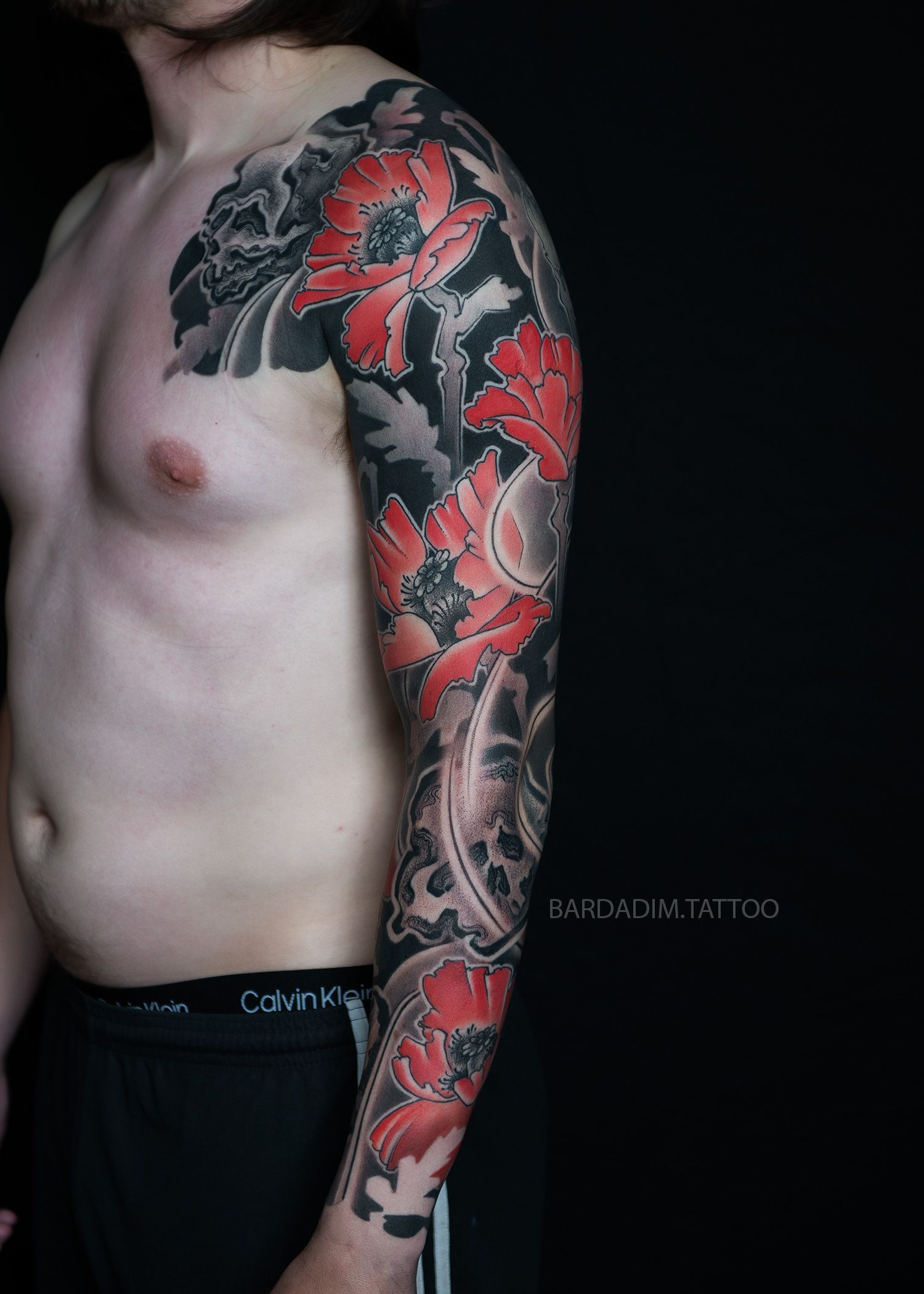Japanese Mythology
The combination of crabs and cherry blossoms, carry deep meanings in Japanese tattoo culture. In this blog post, we will explore the symbolism behind these elements and their significance in Irezumi.
Crabs
In Japanese tattoo culture, crabs have a significant symbolic presence. They are often depicted in a stylized and powerful manner, embodying various meanings:
Cherry blossoms
Known as "sakura" in Japanese, hold immense cultural significance and have a long-standing connection with Irezumi tattoos. They represent the following symbolic meanings:
Combining Symbolic Meanings:
When crab and cherry blossom motifs are combined in an Irezumi tattoo sleeve, they create a captivating narrative that carries profound symbolic depth. The juxtaposition of the crabs' resilience against the delicate and fleeting nature of cherry blossoms conveys a sense of harmony between strength and beauty, reminding us that even in the face of impermanence, resilience prevails.
Furthermore, the combination can also symbolize the balance between protection and embracing the transient aspects of life. It serves as a reminder to stay strong, protect oneself from negative influences, while also appreciating the fleeting moments and embracing the beauty that surrounds us.
The combination of crabs and cherry blossoms in an Irezumi tattoo sleeve exemplifies the depth of symbolism present in Japanese tattoo culture. Crabs symbolize resilience and protection, while cherry blossoms represent transience and beauty. Their fusion creates a powerful visual narrative, reminding us of our innate strength, the importance of protection, and the significance of embracing the beauty and transitory nature of life.
Tattooing Process
When considering an Irezumi tattoo sleeve featuring crabs and cherry blossoms, it is essential to reflect on the profound meanings they hold and choose a design that resonates with your own personal journey.
Embrace the symbolism, appreciate the artistry, and let your Irezumi tattoo tell a captivating story that reflects your connection to Japanese tattoo culture.
All important tattoo process steps are shown in this video. Enjoy.
All Tattoo Projects
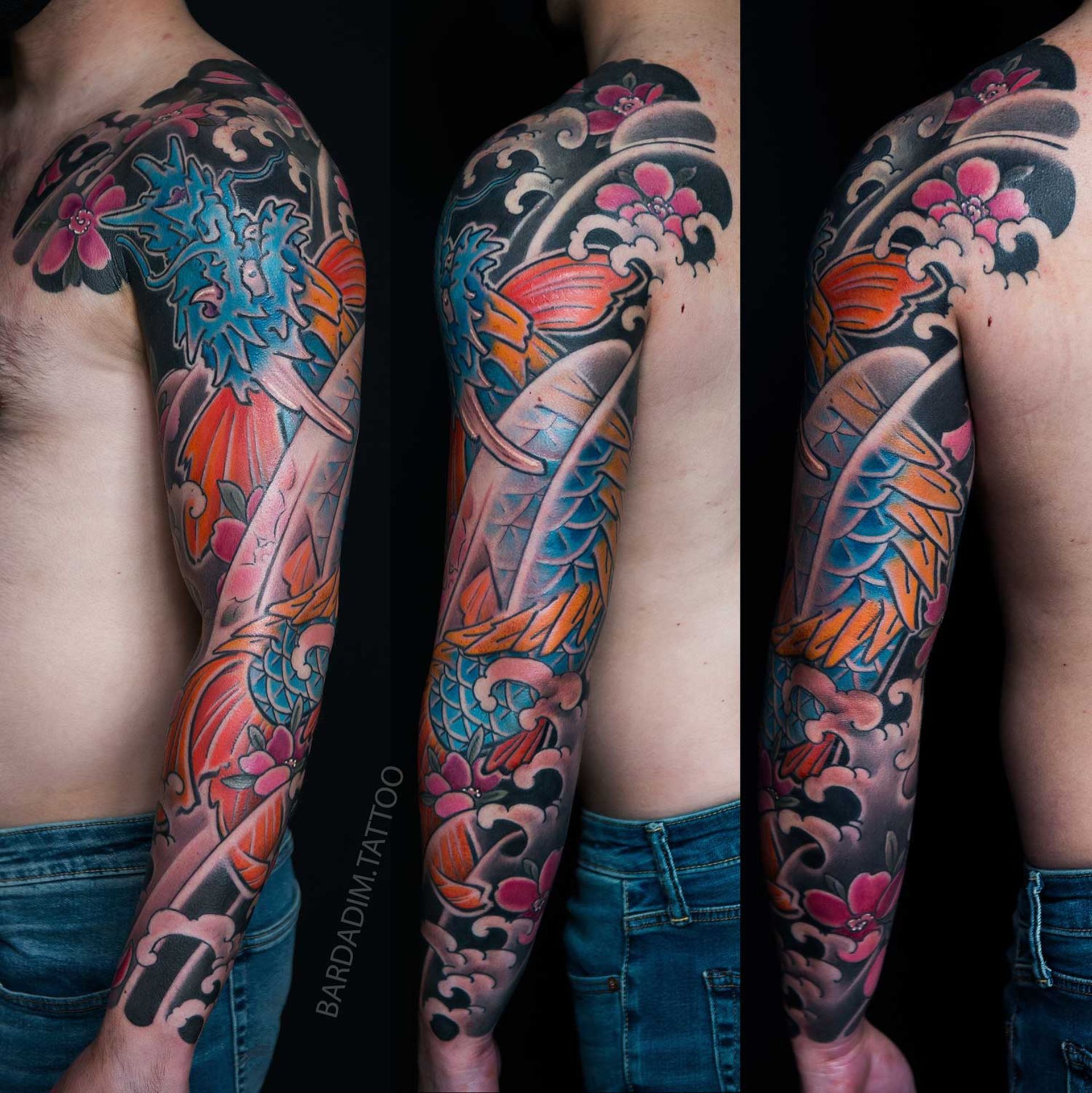
Other Posts
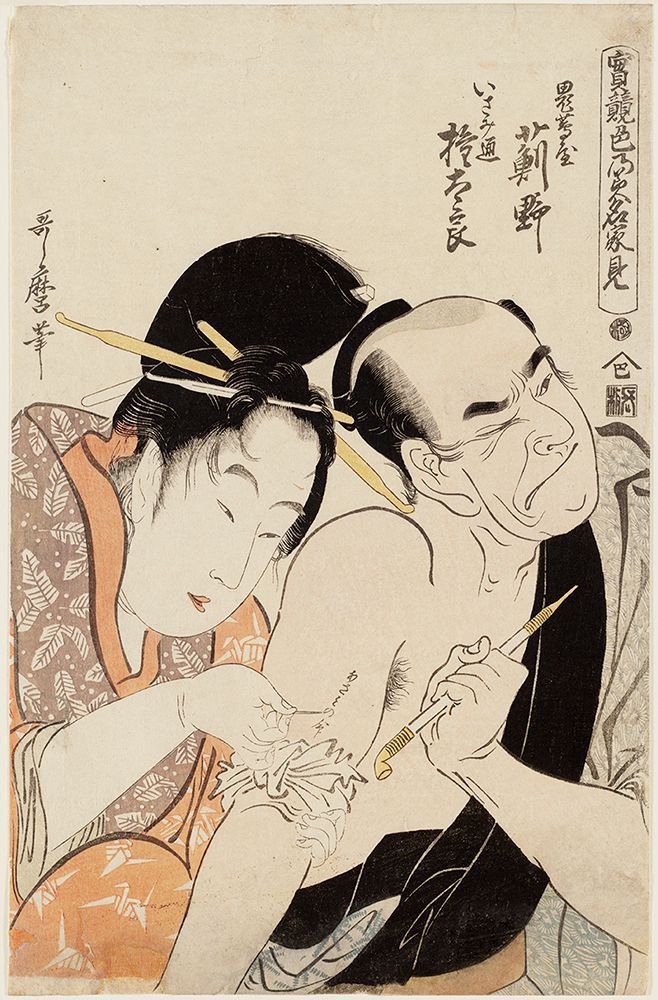

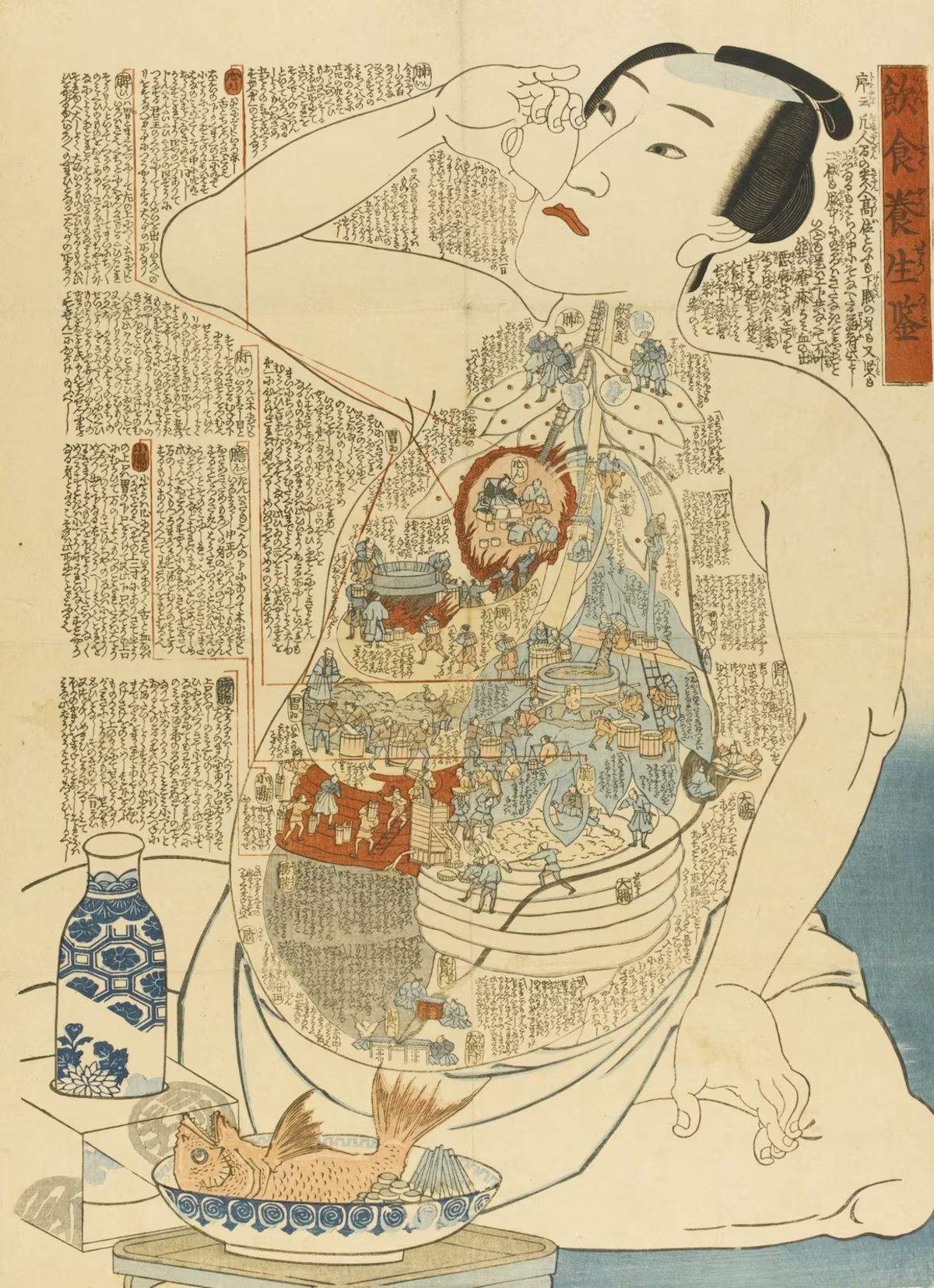
Ready to start your tattoo project?
We do NOT do walk-ins. ONLY private appointments which really easy to schedule. Please learn the process and request your consultation.


